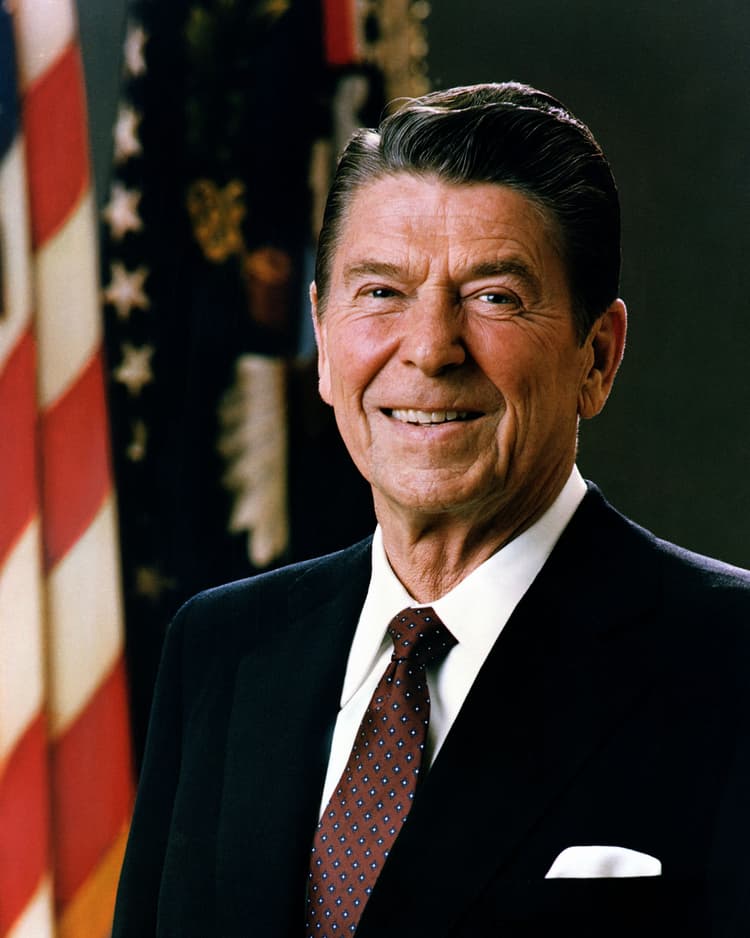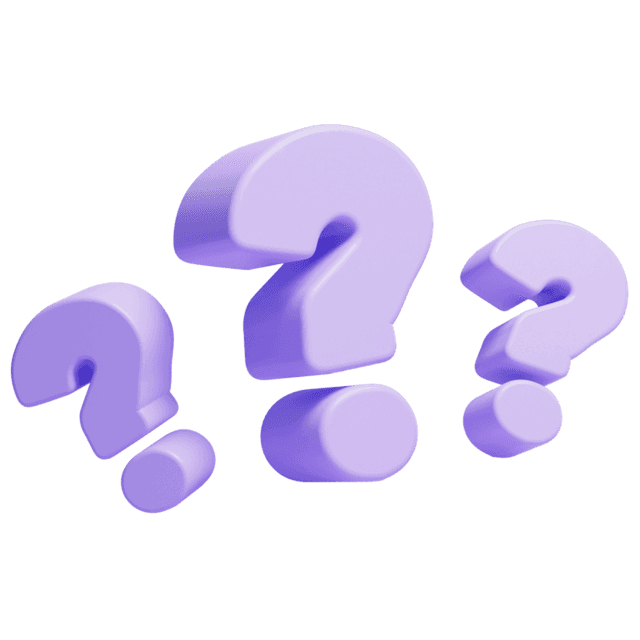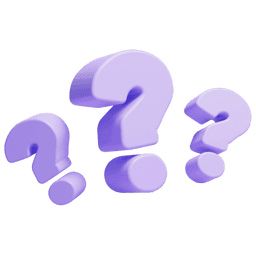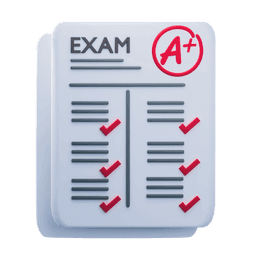Reagan and Conservatism
Joseph Brown
17 min read
Listen to this study note
Study Guide Overview
This study guide covers the Reagan Revolution, including Reagan's rise to presidency, Reaganomics (supply-side economics, tax cuts, spending cuts, impact on the national debt), and social issues like the AIDS epidemic and the "Just Say No" campaign. It also examines key events such as the PATCO strike, the Challenger disaster, and Supreme Court nominations (including Sandra Day O'Connor, Robert Bork, and Clarence Thomas). Finally, it discusses the presidencies of George H.W. Bush (including the savings and loan crisis, the ADA, and the 1992 election) and Bill Clinton (NAFTA, Don't Ask Don't Tell, impeachment, and the Columbine shooting).
#Reagan Revolution
Ronald Reagan’s election in 1980 and re-election in 1984 was the result of many ongoing processes that had their roots in earlier US politics. You should be able to explain his rise to the presidency in 1980 (see also the roots of all this backlash in the 1960s/1970s in Unit 8) and what his policies looked like in the 1980s.
Conservatives disliked the increasing size of the federal government since the New Deal and Great Society, both in terms of overall spending and the intrusion into everyday life. Many fiscal conservatives wanted less government spending and less taxation in return. They blamed the Carter administration (1977-1981) for the stagflation, high gas prices, the poor economy of the 1970s, and perceived US weakness after the Iran Hostage Crisis.
Social Conservatives were concerned about the perceived decline in moral values they saw in the US. They saw Roe v. Wade, which legalized abortion in 1973, as an attack on the sanctity and protection of life. They opposed the ERA, feminism, LGBT rights, and sexual revolution of the 1960s that encouraged sex outside of heterosexual marriage and the undoing of traditional gender roles. This would later play a role in the Reagan administration’s delayed response to the AIDS crisis of the 1980s.
Other conservatives, in a call back to Nixon’s Law and Order rhetoric of the 1970s, opposed the rise in crime and wanted tougher federal policies toward drugs and criminals. This was often linked to opposition to anti-war and civil rights protesters, who some conservatives saw as undermining the social order.
Some conservatives also opposed school desegregation and fought to keep black and white students separate, especially in northern metropolitan areas where bussing was used to integrate school districts. Other conservatives opposed affirmative action—especially in higher education—which gave special consideration to groups who had been discriminated against in the past like women and African Americans. They challenged this in court, but the Supreme Court held in Bakke v. California that while strict racial quotas were not allowed, taking demographic factors like race into consideration was allowable as part of larger admissions processes.
#Election of 1980
Ronald Reagan, a well-known movie and television actor, gained fame among Republicans as an effective political speaker in the 1964 Goldwater campaign. He was soon elected governor of California, the nation’s most populous state.

#Image Courtesy of Wikimedia
In 1980, Jimmy Carter was in serious trouble. Inflation touched off by another oil shock reached double digit figures. The Federal Reserve’s efforts led to a recession.
Carter fought back claiming the Reagan was too reckless to conduct American foreign policy in the nuclear age. He charged that the election would decide whether we had peace or war. He tried to portray him as a war monger. Reagan pointed to a “misery index” of 28 (rate of inflation added to the rate of unemployment) and concluded his campaign by asking a huge television audience “Are you better off now than you were four years ago?” Reagan was elected, carrying 45 states.
#Reaganomics
The Reagan administration advocated supply-side economics, arguing that tax cuts and reduced government spending would increase investment by the private sector, which would lead to increased production, jobs, and prosperity.
This approach contrasted with Keynesian economics long favored by Democrats, which relied on government spending during economic downturns to boost consumer income and demand. Critics of supply-side theory compared it to the “trickle down” economics of the 1920s, in which wealthy Americans prospered, and some of their increased spending benefited the middle class and the poor.
These were supply-side economic policies based on the idea that cutting taxes on the rich would produce new investment and new businesses, which would then create new jobs or raises for middle- and working-class people—also called Trickle-down economics. This remains highly controversial to this day, but it definitely made US economic inequality worse as the rich got richer. Reagan later raised some taxes a few times in the early 1980s, but, overall, tax rates declined in the 1980s and budget deficits soared.
#Tax Cuts
Congress passed the Economic Recovery Act of 1981, which included a 25% decrease in personal income taxes over three years. Cuts in corporate income taxes, capital gains tax (a tax levied on profit from the sale of property or an investment), and gift and inheritance taxes guaranteed that a large share of the tax relief went to upper-income taxpayers. Under Reagan, the top income tax rate was reduced to 28%.
#Spending Cuts
With the help of conservative Southern democrats, the Republicans cut more than
Reagan began to cut the budget for federal programs he disliked, including the Occupational Safety and Health Administration (OSHA) and the Environmental Protection Agency (EPA) Reagan’s Secretary of the Interior, James Watt, opened up federal forests to logging, and public lands to oil and mining interests.
#Recession
As policies of Reaganomics took hold, the economy rebounded and beginning in 1983 entered a long period of recovery. While upper income groups, including well-educated workers and “yuppies” (young urban professionals) enjoyed higher incomes from a deregulated marketplace, the standard of living of the middle class remained stagnant or declined. The term Reaganomics was often given the quip “the rich got richer and the poor got poorer”
National Debt
By the mid-1980s Reagan’s tax cuts combined with large increased in military spending were creating federal deficits of more than200 billion a year. Over the course of Reagan’s two terms, the national debt tripled from 2.7 trillion.
As a result, the US trade deficit (the amount by which the cost of a country's imports exceeds the value of its exports) reached a staggering 1 million worth from people in BananaLand. Residents of BananaLand want cars, so they buy 1 million trade deficit; CarNation has a
In 1985, for the first time since WWI, the US became a debtor nation.
#PATCO Strike
Reagan opposed a strike in the air traffic controllers union (PATCO) in the summer of 1981. The president fired the striking workers, decertified the union, and ordered the secretary of transportation to hire and train thousands of new air traffic controllers at a cost of1.3 billion. The price was worth it to the administration to prove that no group of government employees had the right to defy the public interest.
#Space Shuttle Program
NASA's space shuttle fleet began setting records with its first launch on April 12, 1981 and continued to set high marks of achievement and endurance through 30 years of missions. Starting with Columbia and continuing with Challenger, Discovery, Atlantis and Endeavour, the spacecraft has carried people into orbit repeatedly, launched, recovered and repaired satellites, conducted cutting-edge research and built the largest structure in space, the International Space Station. The final space shuttle mission, STS-135, ended July 21, 2011
As humanity's first reusable spacecraft, the space shuttle pushed the bounds of discovery ever farther, requiring not only advanced technologies but the tremendous effort of a vast workforce.
The NASA space shuttle Challenger exploded on January 28, 1986, just 73 seconds after liftoff, bringing a devastating end to the spacecraft’s 10th mission. The disaster claimed the lives of all seven astronauts aboard, including Christa McAuliffe, a teacher from New Hampshire who would have been the first civilian in space. It was later determined that two rubber O-rings, which had been designed to seal the sections of the rocket booster, had failed due to cold temperatures on the morning of the launch.
#“Just Say No” Campaign
The “Just Say No” movement was one part of the U.S. government’s effort to revisit and expand the War on Drugs. As with most anti-drug initiatives, Just Say No—which became an American catchphrase in the 1980s. In the early 80s, a cheap, highly addictive form of cocaine known as “crack” was first developed. The popularity of crack led to an increase in the number of Americans who became addicted to cocaine.
When President Ronald Reagan took office in 1981, he vowed to crack down on substance abuse and reprioritize the War on Drugs During the Reagan years, prison penalties for drug crimes skyrocketed, and this trend continued for many years. In fact, the number of people incarcerated for nonviolent drug offenses increased from 50,000 in 1980 to more than 400,000 by 1997. President Reagan’s wife, Nancy Reagan, launched the “Just Say No” campaign, which encouraged children to reject experimenting with or using drugs by simply saying the word “no.”
#AIDs Epidemic
The outbreak of AIDS (acquired immune deficiency syndrome) in the early 80s took most Americans by surprise. Doctors first noticed a few cases of a rare form of pneumonia and an usual type of skin cancer in male patients in NYC and San Francisco. It apparently originated from Central Africa and spread to the US, where it found its victims primarily among gay men.
Stung by the accusation that AIDs was a gay disease, gay men faced new public condemnation when they were trying to care for the growing number of sick in their ranks. Gay men began to practice safer sex, using condoms and confining themselves to only trusted partners.
It soon became clear that AIDS could not be so easily contained. It began to appear among IV drug users who shared the same needles and hemophiliacs and other receiving frequent blood transfusions. Scientists tried to reassure the public by explaining that the virus could be spread only by the exchange of bodily fluids, primarily blood and semen.
The Reagan administration was slow in its approach to the epidemic. In November 1983 there were 2803 known cases and 1416 deaths. By 1985 there were more than 12,000 cases and more than 6000 deaths. In 1987, Congress voted to spend 15,000 a year.
In the 2010s, pre-exposure prophylaxis (PrEP), a medication such as Truvada, was developed. The drug is specifically targeted for men who have sex with men (MSM). This daily drug, if taken appropriately by gay men who are sexually active, has a 99% success at preventing the transmission of HIV.
#Supreme Court Nominations
President Reagan followed through on his pledge to appoint conservative judges to the Supreme Court by nominating Sandra Day O’Connor, the first woman to the court, as well as Antonin Scalia and Anthony Kennedy.
In 1987, Reagan had yet another opening on the SUpreme Court and chose to nominate Robert Bork. He was a conservative who had been a professor at Yale Law School. He was an advocate of original intent, meaning upholding the Constitution as the Framers intended. Senator Kennedy led a fight on the nomination, bringing attention to Bork’s extreme conservative views that threatened to turn back a generation of civil liberties decision. The hearing was very heated and went on for hours. The Senate then refused to confirm him. Getting “borked” became synonymous with having a judicial nomination turned down.
Led by a new chief justice, William Rehnquist, the Supreme Court scaled back affirmative action in hiring and promotions, and limited Roe v Wade by allowing states to impose certain regulations on abortion, such as requiring minors to notify their parents before having an abortion.
George H. W. Bush nominated Clarence Thomas to the Supreme Court to replace the retiring Thurgood Marshall proved extremely controversial. Thomas’ conservative views on judicial issues and charges of sexual harassment from a former co-worker, Anita Hill, particularly angered African Americans and women. Nevertheless, the Senate confirmed him
#Election of 1988
Michael Dukakis, governor of Massachusetts, won the Democratic nomination. The Republican candidate was Reagan’s vice president, George H.W. Bush and his vice-presidential nominee Dan Quayle. Bush charged that the Democrats were soft on crime and weak on national defense. He also appealed to voters by promising not to raise taxes, saying in a speech, “Read my lips. No new taxes.” This promise would eventually come back to bite Bush.
#Taxes and the Economy
Much of Bush’s time was taken up with two pressing issues: the possible meltdown of the savings and loans industry and the soaring federal budget deficit. The savings and loans industry had fallen into deep trouble as a result of lax regulation and unwise, in some cases, fraudulent loan policies. Altogether, the loan cleanup cost the government
The budget deficit was an even greater problem. In campaigning for president, Bush had promised “no new taxes” but in the fall of 1990 he broke the pledge. In a deal with Congress, he agreed to a budget that included new taxes along with substantial spending cuts, especially on the military.
Unfortunately, the budget deal coincided with the beginning of a slow but painful recession. Bush faced anger from voters for breaking a campaign pledge not to raise taxes, but also the economic decline left to greatly reduced government revenues and the deficit continued to soar. This would ultimately cost him a second term.
#Americans with Disabilities
Bush signed into law the American with Disabilities Act (ADA) in 1991. It prohibited the discrimination against the disabled in hiring, transportation, and public accommodations. It called for all public buildings, restaurants, and stores to be made accessible to those with physical handicap and required that businesses hire without regard to disability.
#Election of 1992
The recession that began in 1990 became a major political issue in the election of 1992. The political impact was devastating for the Bush administration. Although the economy started to advance after the Persian Gulf War, unemployment persisted as businesses hesitated to hire new workers. Bush’s popularity plummeted.
Arkansas Governor Bill Clinton stressed the need for investment in the nations future, rebuilding roads and bridges, training workers for high tech jobs and solving the growing national health care crisis. Despite Clinton’s victories in the Democratic primaries, he faced a new rival in H. Ross Perot. Perot signaled out the deficit as the nation's greatest problem and agreed to run as an independent. As a billionaire, he easily financed his own campaign
Clinton won the race, defeating incumbent George H.W. Bush.
#Clinton’s Domestic Policies
Even Democratic President Bill Clinton (1993-2001) reflected some conservative tendencies. As a Democratic president after the Reagan Revolution, Clinton felt that he had to be a “New Democrat” who pursued some conservative policies. This also protected him from attack from conservative opponents, whom he needed to take into consideration after the 1994 midterms when conservative Republicans led by House Speaker Newt Gingrich took back the House of Representatives.
Some of his early victories included:
- The Democratic Congress was able to pass the Family and Medical Leave Act and the “motor voter” law that enabled citizens to register to vote as they received their driver’s licenses.
- The Brady Handgun Bill, which mandated a five-day waiting period for the purchase of handguns, was enacted. The bill was named after Reagan’s press secretary, who had been shot and paralyzed on an assassination attempt of Reagan.
- The Anti-Crime Bill provided30 billion in funding for more police protection and crime prevention programs. It also banned the sale of most assault rifles, which angered the gun lobby led by the National Rifle Association (NRA). It also put into place a three-strikes-and-your-out rule, which caused a huge increase in US prison population, especially for African Americans
- Congress approved the North American Free Trade Agreement (NAFTA). It was a free trade plan that united the US, Mexico and Canada into a common market without tariff barriers.
#Gay Rights
Bill Clinton promised if elected that he would end the ban on homosexuals in the military. The Joint Chiefs of Staff and many members of Congress warned that acceptance of gays and lesbians would destroy morale and seriously weaken the armed forces. Clinton settled for a Pentagon compromise “Don’t ask, don’t tell” policy which would permit homosexuals to continue serving in the military as they had in the past as long as they did not reveal their sexual preference and refrained from homosexual conduct.
Violence towards gays in the 90s continued.In 1998 the fatal beating of Matthew Shepard, a 21 year old, gay college student in Laramie, WY occurred. It spurred calls for hate-crime legislation, and the judge in the case, banning so called gay-panic defense, sentenced Shepard’s assailant to two consecutive life sentences.
The issue of same sex marriage came to a head in 1996 when President Clinton signed the Defense of Marriage Act (DOMA), which decreed that states did not have to recognize same-sex marriages performed elsewhere.
#Republican Control of Congress
In the 1994 Congressional midterms, Republicans won control of both houses of Congress. They benefited from Newt Gingrich’s (speaker of the house) well-organized effort to promote a short list of policy priorities they called the “Contract with America”
The confrontation between Clinton and Gingrich’s Republicans led to two shutdowns of the federal government in late 1995, which many Americans blamed on Republicans in Congress.
Antigovernment reformers were not helped by the mood after the bombing in 1995 of a federal building in Oklahoma City by Timothy McVeigh, a militia-movement extremist. The bombing took 169 lives, the worst act of domestic terrorism in the nation’s history until September 11, 2001. In 1996, Congress and the president compromised on a budget that left Medicare and Social Security benefits intact, limited welfare benefits to five years under Personal Responsibility and work Opportunity Act, set some curbs on immigrants, increased the minimum wage, and balanced the budget. This produced the first federal surplus since 1969. ## Clinton’s Second Term
#Kyoto Protocol
The Kyoto Protocol, was an agreement reached in Kyoto, Japan, in 1997, mandating that industrialized nations cut their greenhouse gas emissions More than 100 developing countries, including China and India, were exempted from the treaty. The treaty could not go into effect until at least 55 countries, accounting for 55% of the world's emissions in 1990, ratified it.
#Columbine Shooting
At Columbine High School in Littleton, Colorado, two teens went on a shooting spree on April 20, 1999, killing 13 people and wounding more than 20 others before turning their guns on themselves and committing suicide. The Columbine shooting was, at the time, the worst high school shooting in U.S. history and prompted a national debate on gun control and school safety
#Impeachment
A series of embarrassing disclosures involving Bill Clinton’s character came about during his presidency. The included:
- The New York Times had raised questions about a bankrupt Arkansas land development called Whitewater in which the Clintons had lost a modest investment.
- Another scandal, which was called Travelgate, involved the firing apparently at the urging of First Lady Hillary Clinton, of several White House employees who arranged travel for the press covering the president.
- In 1994, Paula Jones, a former Arkansas state employee filed a sexual harassment suit against Clinton charging that in 1991, the then Governor Clinton made sexual advances towards her. The special prosecutor appointed to probe the Whitewater transactions, Kenneth Star, turned over stone after stone in search of evidence of malfeasance, until he came across rumors that Clinton had conducted an affair with a White House intern, Monica Lewinsky.
Clinton denied the affair saying “I did not have sexual relations with that woman, Miss Lewinsky.” Starr subpoenaed Lewinsky who gave a detailed account of her sexual encounters with the president and provided physical evidence implicating Clinton. Realizing that he could no longer deny the affair, on August 17, 1998 Clinton appeared before Starr’s grand jury and admitted to having inappropriate intimate contact with Lewinsky.
That evening he spoke briefly to the nation and admitted that the relationship was not appropriate and wrong. He regretted misleading the people and his wife, but refused to apologize for his behavior or false denials. Starr’s committee turned over a report to Congress with 11 possible impeachment charges.
The key charge was perjury, of which Starr provided graphic detail on all of the sexual encounters between Clinton and Lewinsky to prove the president had lied when he denied in engaging in sexual relations. Many Americans responded by condemning Starr instead of the president. They were shocked by the details and blamed him for exposing families to the distasteful details. Hillary Clinton stood staunchly by her husband and a majority of the public agreed that no matter how bad the president's conduct was, it was a private matter.
Republican leaders ignored the public sentiment and pressed ahead with impeachment proceedings. The House voted for 4 articles of impeachment, rejecting 2 and approving 2 others on perjury and obstruction of justice by a party line vote. With a 2/3 majority vote required in the Senate to remove him from office, there was no chance of conviction in the partisan atmosphere. On February 12, 1999 the GOP was unable to muster the votes to remove the president.
Continue your learning journey

How are we doing?
Give us your feedback and let us know how we can improve





